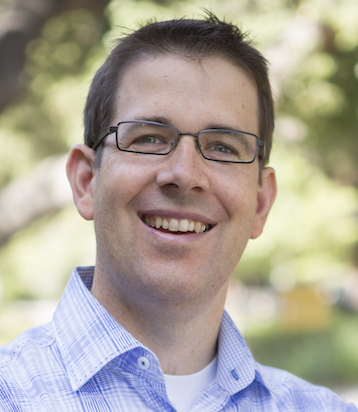Karl Haushalter

Professor of Chemistry and Biology
Jacobs Science Center, Room 1218
301 Platt Blvd.
Claremont, CA 91711
909.607.3928
Karl_Haushalter@hmc.edu
Education and professional experience
- B.A., Rice University
- PhD, Harvard University
- Visiting Lecturer, University of California, Irvine
- Postdoctoral Fellow, University of California, San Diego
Teaching
- Bio 182: Chemistry in Living Systems
- Bio 184: Methods in Biochemistry
- Bio 187: HIV-AIDS: Science, Society and Service
- Bio 189: Topics in Biochemistry and Molecular Biology
- Chem 21: General Chemistry
- Chem 25: General Chemistry Laboratory
- Chem 58: Carbon Compounds Laboratory
- Chem 105: Organic Chemistry
- Chem 111: Organic Chemistry Laboratory
Research Interests
Double strand breaks or chemically modified bases in DNA arise from exposure to ionizing radiation, environmental toxins, or mistakes during DNA replication. DNA repair enzymes scan the genome and fix DNA damage to maintain genomic integrity. Studying the details of DNA repair provides an entry point into understanding the molecular mechanisms of carcinogenesis, aging, and evolution. Students in the Haushalter lab utilize biochemical and genetic approaches to study enzymes in the homologous recombination repair pathway and the base excision repair pathway. In addition to these scientific pursuits, Prof. Haushalter is active in community efforts to combat the stigma associated with HIV-AIDS and support those living with HIV-AIDS through education and empowerment. The HIV-AIDS: Science, Society, and Service class taught by Prof. Haushalter is an integrative experience, service-learning course that addresses both the science of HIV and the ways that the HIV epidemic has impacted communities.
Recent Student Projects
Matthew Hoss (’08) and Sara Hummel (’06): “Sequence Specificity of Human 8-Oxoguanine DNA Glycosylase”
Katie Mouzakis (’07), Yan Pu (’06), and Tiffany Wu (’06): “DNA Repair Efficiency of Variants of Human 8-oxoguanine DNA Glycosylase 1 (hOGG1) Identified in Cancer Patients”
Fang-Yuan Chang (’07): “Trapping the hOGG1:nucleosomal DNA complex”
Brianna Lyon-Robers (’06): “Improved methods for in vitro nucleosome reconstitution”
Steven Petesch (’05): “Location mechanism of adenine·8-oxoguanine mismatches by MutY adenine DNA glycosylase”
Sarah Bundick (’05) and Ryan Mashiyama (’04): “Target Location by the DNA Repair Enzyme SMUG1”
Kit Rodolfa (’04): “Synthesis of large fragments of DNA incorporating site-specific base lesions”
Alexis Kaushansky (’04): “Filling in the black box between I-CreI induced DNA cleavage and double-strand break repair”
Selected Publications
Gemmen, G. J., R. Sim, K. A. Haushalter, P. C. Ke, J. T. Kadonaga and D. E. Smith. 2005. Forced unraveling of nucleosomes assembled on heterogeneous DNA using core histones, NAP-1, and ACF. J. Mol. Biol. 351: 89-99.
Wibley, J. E. A., T. R. Waters, K. Haushalter, G. L. Verdine and L. H. Pearl. 2003. Structure and specificity of the vertebrate anti-mutator uracil-DNA glycosylase SMUG1. Mol. Cell. 11(6): 1647-1659.
K. A. Haushalter and J. T. Kadonaga. 2003. Chromatin assembly by DNA-translocating motors. Nat. Rev. Mol. Cell Biol. 4(8): 613-620.
L. Chen, K. A. Haushalter, C. M. Lieber, and G. L. Verdine. 2002. Direct visualization of a DNA glycosylase searching for damage. Chem. Biol. 9: 345-350.
H. Nilsen, K. A. Haushalter, P. Robins, D. E. Barnes, G. L. Verdine and T. Lindahl. 2001. Excision of deaminated cytosine from the vertebrate genome: role of the SMUG1 uracil DNA glycosylase. EMBO J. 20: 4278-4286.
K. A. Haushalter, P. T. Stukenberg, M. W. Kirschner and G. L. Verdine. 1999. Identification of a new uracil DNA glycosylase family by expression cloning using synthetic inhibitors. Curr. Biol. 9: 174-185.
K. A. Haushalter, J. Lau, and J. D. Roberts. 1996. An NMR investigation of the effect of hydrogen bonding on the rates of rotation about the C-N bonds in urea and thiourea. J. Amer. Chem. Soc. 118: 8891-8896.